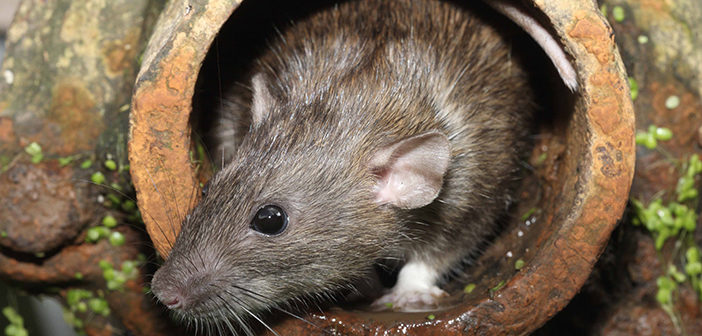Laurence Barnard, country business manager, Professional and Specialty Solutions for BASF Pest Control, discusses the importance of reducing the risk to non-target species, and shares some top tips to encourage responsible rodenticide usage.
Every individual who handles rodenticides has a responsibility to protect non-target species.
Put simply, rodenticides are used as a chemical pest control method and contain highly potent poisons, meaning they are toxic to all animals – not just target species named on the label, such as rats and mice. All other species are non-targets.
Despite stringent environmental management and preventative measures, many will experience issues with rodents moving into buildings, outhouses, and outdoor areas in search of food, water and harbourage.
And with rats alone carrying 45 different diseases, an infestation can pose a very real, serious threat to people’s health and public safety.
As such, sometimes rodenticides are an essential tool to handle an infestation quickly and effectively, but there are several things pest technicians can do to reduce the risk to non-target species.
Non-target primary and secondary toxicity
The first thing to understand is that there are two ways a non-target species might come be contaminated when rodenticides are being used – through either primary or secondary toxicity.
Primary toxicity is when a non-target species comes into direct contact with and consumes bait. This may occur as a result of users not storing baits properly or not baiting in a safe and secure manner, and it is often pets and livestock that suffer from primary poisoning.
Wildlife can also be poisoned directly if they are able to access the rodenticide.
Secondary toxicity, on the other hand, is when a non-target species consumes a rat or mouse that has eaten the rodenticide bait. The rats and mice consumed are usually dead or dying.
The more dead or dying rats and mice that are consumed, the greater the level of secondary poisoning. More often than not, secondary poisoning can be seen in birds of prey such as barn owls or kestrels, or scavenger species such as foxes.
Campaign for Responsible Rodenticide Use (CRRU) Think Wildlife reported that routine monitoring from 2016 to 2021 found anticoagulant rodenticide traces present in nearly 90 % of barn owls tested, demonstrating that more needs to be done to reduce the risk to all non-target species.
Both of these types of poisoning happen as a result of environmental exposure, and every individual who applies rodenticides has a responsibility to reduce this risk of such exposure. So, how can this be done?
Complete health and safety assessments
With the use of all pesticides, reading and following the product label is a strict requirement. With rodenticides, however, it is also essential to complete an Environmental Risk Assessment (ERA) before rodenticides are used.
The ERA must record the various pathways by which the environment, wildlife and other non-target animals may become exposed to the rodenticide. It is also vital to record details of the site survey, how much rodenticide is used, and exactly where it is placed.
Use secure baiting methods
It goes without saying that all non-target animals and humans should be prevented from accessing rodenticide as far as is possible.
The most effective way of doing so is by securing bait inside a tamper-resistant bait box, ensuring it is clearly labelled and placed in a suitable location, ideally away from any non-target species.
Some rodenticides may also be applied using a covered and protected approach, using natural materials from the site such as palettes, timber or tyres, to secure and cover bait accordingly.
Consider the active substance
Second-generation anticoagulant rodenticides (SGARs) are classified as ‘bioaccumulative,’ which means that there is a gradual build-up or accumulation in the body.
The concentration in body tissues continues to increase every time bait is eaten. This bioaccumulation can cause secondary poisoning when the bodies of rodents that have eaten the SGAR bait are then eaten by non-target species such as owls and foxes.
The non-anticoagulant active, cholecalciferol, which is used in Selontra, is neither bioaccumulative nor persistent in the environment, therefore reducing the secondary poisoning issues described above.
The antidote for both accidental primary and secondary poisoning from anticoagulant baits, such as Storm Ultra Secure, is Vitamin K, which should always be administered by a vet, as per the label guidance.
For accidental poisoning from cholecalciferol baits, such as Selontra, then treat symptomatically. Treatment would include a low calcium diet, a high salt and fluid intake and avoidance of exposure to sunlight.
Again, always refer to the product label for best practice.
Considering which active substance to use is an important consideration as part of a planned approach, and each site should be treated differently.
Dispose of dead rodents
Frequent searching for and disposing of dead rodents throughout the treatment programme will significantly help to prevent secondary poisoning – if there aren’t any bodies for wildlife or pets to consume, then the risk will be reduced!
After a riddance programme is complete, it’s also important to ensure all baits are removed.
However, if you’re using Selontra it can be left down in high-risk areas, following an ERA, where it is deemed necessary under permanent baiting guidance where re-invasion is highly likely.
For all other areas, we recommend monitoring for any further signs of rodent activity by using Monitoring Paste by BASF– this non-toxic but highly palatable “bait” block will reveal early signs of activity and can be applied year-round as part of an integrated pest management (IPM) programme, without posing a risk to non-targets.
Avoid an infestation in the first place
Of course, the best way to reduce the risk to non-targets is to prevent the need for a chemical control method in the first place. This means taking measures to deter rodents from migrating onto the site.
Pest controllers should focus on adopting an integrated pest control programme, concentrating on improving hygiene, removing access to food sources and harbourage, proofing and maintenance of a site.
Combined with regular site inspections and monitoring of rodent activity and proper training, the chances of an infestation can be greatly reduced.




